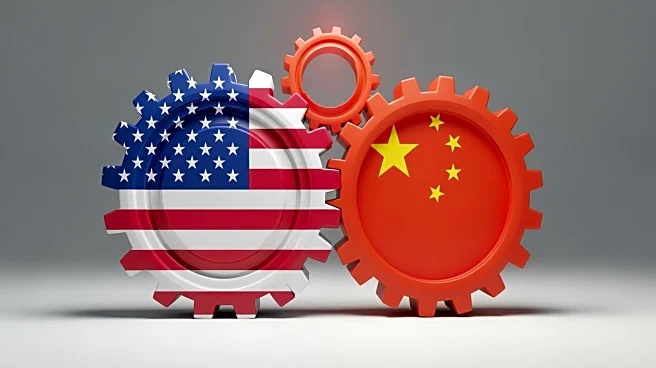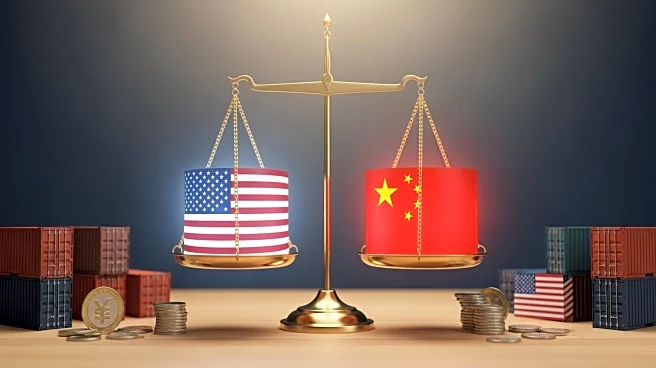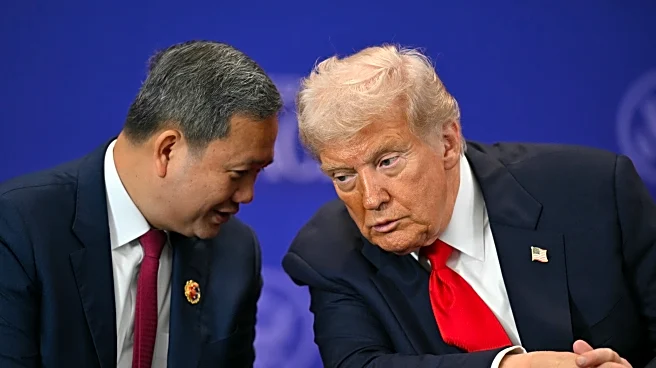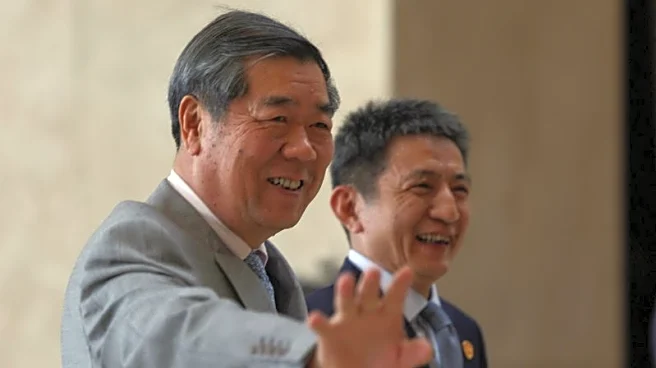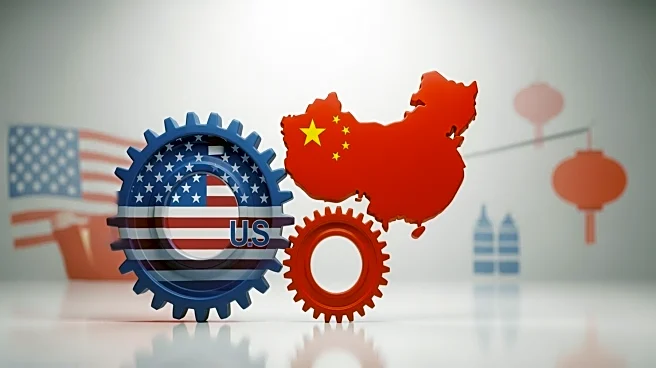What's Happening?
President Trump and Chinese President Xi Jinping are set to meet during the ASEAN Summit in Kuala Lumpur to discuss ongoing trade tensions between the United States and China. The meeting comes after recent
escalations, including China's imposition of export restrictions on rare earth minerals and the U.S. increasing tariffs on Chinese goods to 130%. U.S. Treasury Secretary Scott Bessent announced a tentative framework for a tariff truce, which includes a pause on rare earth restrictions and a potential deal on the sale of TikTok in the U.S. However, the agreement requires ratification by both countries' internal processes. Despite these efforts, experts remain skeptical about the longevity of any agreement, citing President Trump's history of abruptly changing trade policies.
Why It's Important?
The outcome of the Trump-Xi meeting holds significant implications for global economic stability. The U.S. and China, as the world's two largest economies, have a combined output of $45 trillion, and their trade relations impact global markets. A stable agreement could provide relief to industries affected by tariffs and trade restrictions, particularly in sectors reliant on rare earth minerals and agricultural exports like soybeans. However, the unpredictability of U.S. trade policy under President Trump, coupled with China's economic challenges, including deflation and high unemployment, complicates the potential for a lasting resolution. The ongoing tensions underscore a shift towards economic self-reliance and reduced interdependence between the two nations.
What's Next?
The next steps involve the ratification of the preliminary trade agreement by both the U.S. and China. The U.S. Supreme Court's upcoming decision on the legality of President Trump's tariffs could influence the negotiations, potentially forcing a more definitive agreement. Additionally, President Trump's upcoming visit to Japan to discuss auto tariffs and investment commitments will further test his administration's trade strategy. The broader geopolitical landscape, including the U.S.'s efforts to secure rare earth supplies from other countries, will continue to shape the dynamics of U.S.-China relations.
Beyond the Headlines
The ongoing trade tensions highlight a broader geopolitical shift towards economic nationalism and self-reliance. Both the U.S. and China are investing in strategic industries to mitigate vulnerabilities exposed by the trade conflict. This trend could lead to long-term changes in global supply chains and international trade norms. The situation also raises questions about the future of multilateral trade agreements and the role of international institutions in mediating economic disputes.




